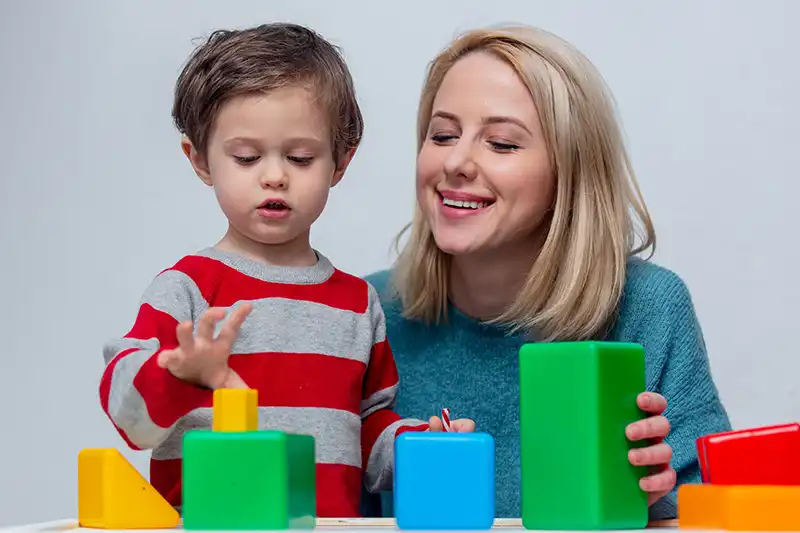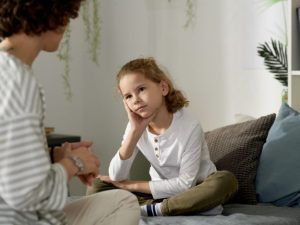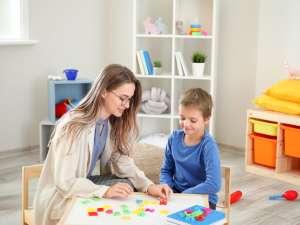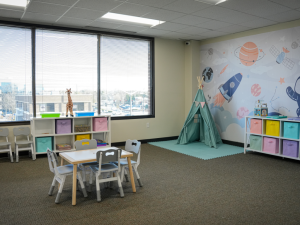As the academic year resumes, back-to-school preparations can be an exciting and overwhelming time for everyone, particularly for children with Autism Spectrum Disorder (ASD). Children with ASD, often struggle with changes in routine, lack of predictability, new people, and environments. Transitions can be anxiety-inducing and present barriers to learning and social interaction. These difficulties make preparing for a successful return to school a priority for families, caregivers, and teachers.
As children transition back to school, it is essential to provide support both at school and at home. Parents are undoubtedly the most critical teachers and advocates for their children in managing the hectic and exciting back-to-school transition. Here are some additional strategies that parents can implement at home to help their children have a successful back-to-school transition:
Get Talking
Start talking with your child about the upcoming school year early. Discuss who their new teacher is. Discuss any new classmates they may be joining, and any changes they may expect in the routine. Use positive and enthusiastic language to talk about the school year ahead. Discuss the exciting events that will happen during the year and highlight opportunities for fun and learning. Celebrate their accomplishments and achievements throughout the previous year.
Acknowledge and address any concerns your child may have about the upcoming school year. If your child is worried about something specific, such as making new friends or a change in routine, discuss how they can overcome obstacles and contribute to problem solving. Encouraging children to express their emotions and talking about their specific worries can help reduce anxiety and provide a sense of control over the situation.
Suggested Techniques
When talking to children about the upcoming school year, parents can utilize several strategies to help their child understand what to expect. Depending on the child’s age and skill level, parents can tailor communication techniques, which can include:
- Visuals: Many children with ASD respond well to visual aids to understand concepts and events. Parents can create pictures or use photographs of the school, classroom, and teacher to help their child see where they will be attending school. Parents can also use social stories, visual schedules, and picture books to explain school routines, expectations, and activities.
- Role-play: Parents can use role-play to help their child understand how to greet their teacher, introduce themselves to classmates, and manage social situations that may arise. Role-playing can help children with communication difficulties build their social skills, boosting confidence, and easing anxiety.
- Setting goals: Communicating to children with ASD what the objectives of the school year are, such as learning to read or make new friends, can help them understand the value of school and motivate them to achieve their goals.
- Q&A Sessions: Create an open dialogue with your child to let your child ask questions or express concerns that they may have about the upcoming school year. It is important to listen actively and be empathetic towards their concerns. Parents can help prepare their child for obstacles they may face and develop coping mechanisms using this communication technique.
- Positive reinforcement: Encouraging positive outcomes and setting a positive tone is vital when speaking with children with ASD. Parents can highlight the fun aspects of school. These include meeting new friends, learning new things, and enjoying fun activities, to support a positive attitude and ease apprehension.
Overall, parents can use these various techniques to communicate with their child with ASD, prepare them for the upcoming school year, and support them in making a smooth back-to-school transition. Effective communication with your child is the key to creating a positive learning environment and maximizing your child’s learning potential in any situation.
Set and Practice a Routine
Establishing a consistent routine is crucial for children with ASD to make a successful transition back to school. Preparing early, creating a visual schedule with pictures or symbols, rehearsing the routine, maintaining consistency, and incorporating fun activities as rewards can help reduce anxiety and promote independence, responsible behavior, and a positive school experience. It’s essential to understand your child’s individual needs and work with professionals and caregivers to create an individualized and effective routine for them.
School Related Activities
In addition to a consistent routine, practicing school-related activities can also be beneficial for children with ASD. Practicing the journey to school, rehearsing greetings and introductions, and role-playing social situations can help children prepare for the new environment and cope with the anxiety of change.
Social Stories
For younger children, reading age-appropriate books that take place in a school setting can help them become familiar with what to expect in school. Advanced reading for high-functioning individuals can also be effective in preparing them for different social scenarios they may encounter in school.
Rewards
Parents should also consider incorporating fun activities as rewards for completing a series of school-related activities or for a successful day at school. These activities can help motivate children with ASD to be more responsible and consistent in their school routine while making the experience enjoyable.
Child Involvement
Moreover, parents should involve the child throughout the back-to-school preparation process. Children with ASD often struggle with change and unpredictability, so being involved in the planning process can help them feel more in control. Parents should also communicate with their child’s teacher and therapist before the start of the school year to ensure that all parties are working together towards the same goals.
Routine
Establishing a consistent routine and practicing school-related activities can help children with ASD make a successful transition back to school. Incorporating fun activities as rewards and involving the child in the planning process can help reduce anxiety and promote independence and responsibility. Communication with the child’s teacher and therapist is also crucial in creating an individualized and effective routine for the child.
Collaborate
Collaboration between parents, teachers, and therapists is essential to ensure the success of children as they go back to school. Consistency and the alignment of treatment goals and a comprehensive understanding of the child are the key reasons why collaboration between these stakeholders is critical.
To collaborate effectively, parents can set up meetings and correspondence channels to facilitate communication with teachers and therapists, provide comprehensive information about their child’s needs, and set up home-school communication to update information quickly and consistently across both settings. Open communication channels and collaboration between these stakeholders create a consistent approach and a solid care plan that meets the unique needs of the child to ensure a successful school year.
Try creating a “get to know me” presentation or paper with your child to give to teachers. This gives your child ownership of who they are and allows them to share a little bit about themselves. It also gives teachers another way to get to know your child.
These applied behavioral practices have shown positive influences helping children as they go back to school. Board Certified Behavior Analysts (BCBAs) are equipped to guide parents and caregivers on how to implement them successfully in their homes. A BCBA will help establish goals, develop progress monitoring schedules and collect systematic data to ensure that the child’s needs are catered for and help them with a successful transition back to school.





